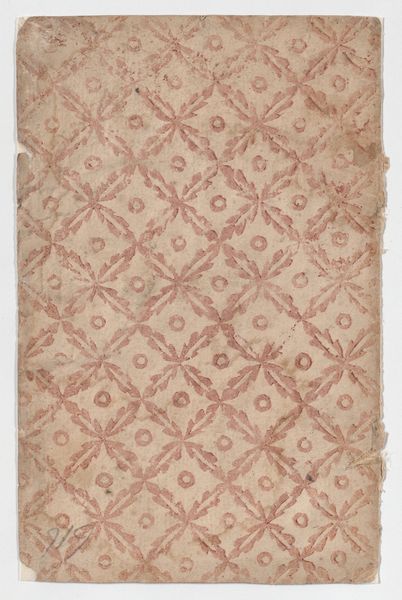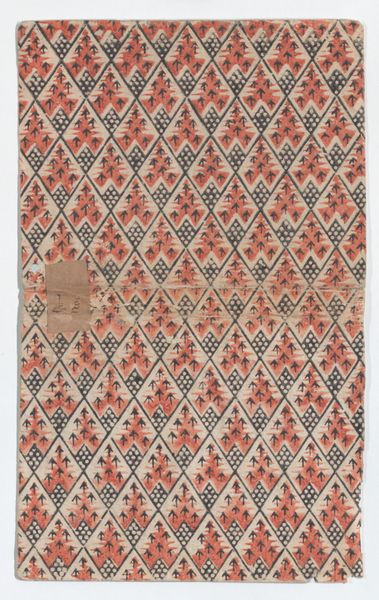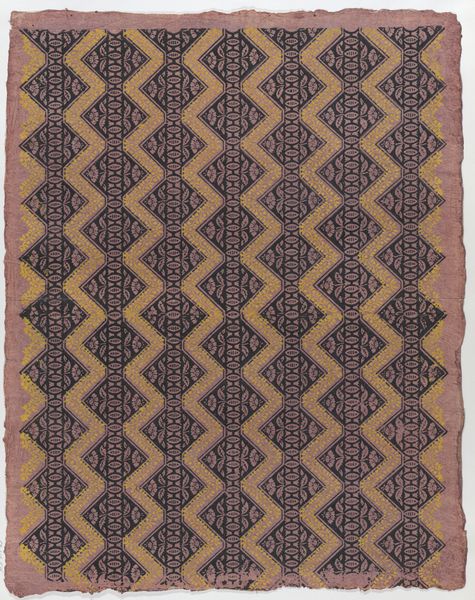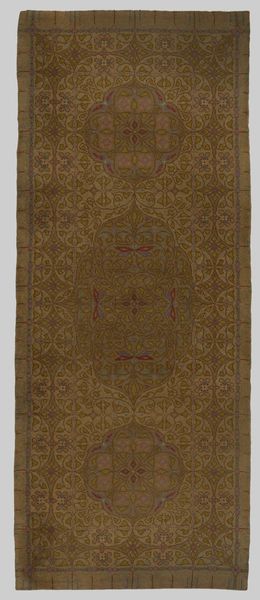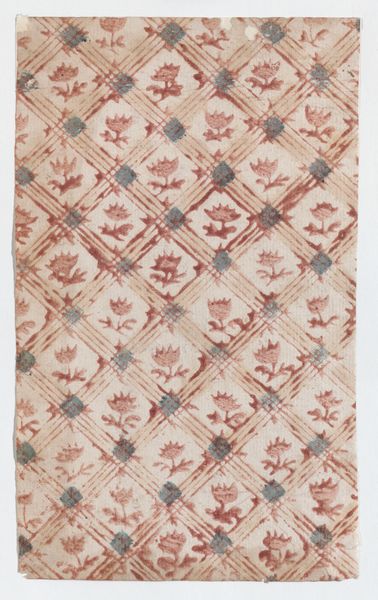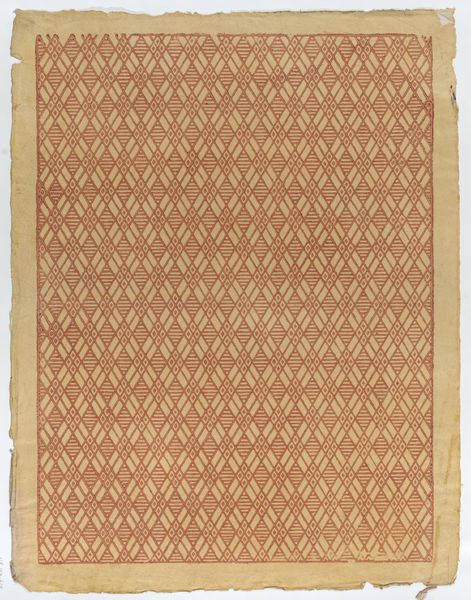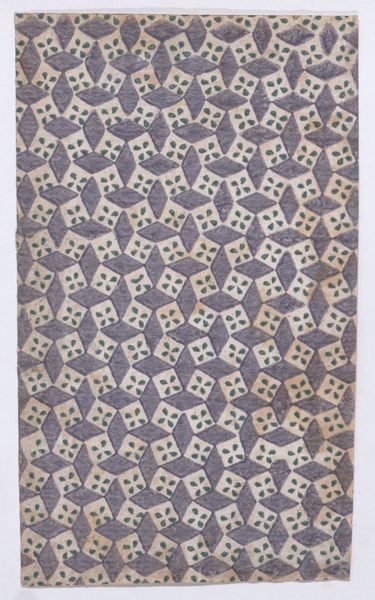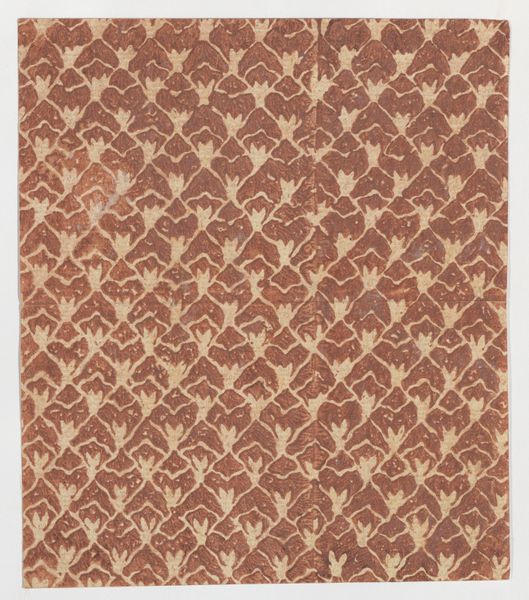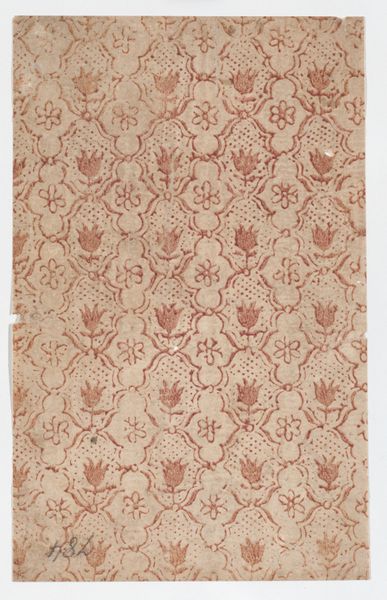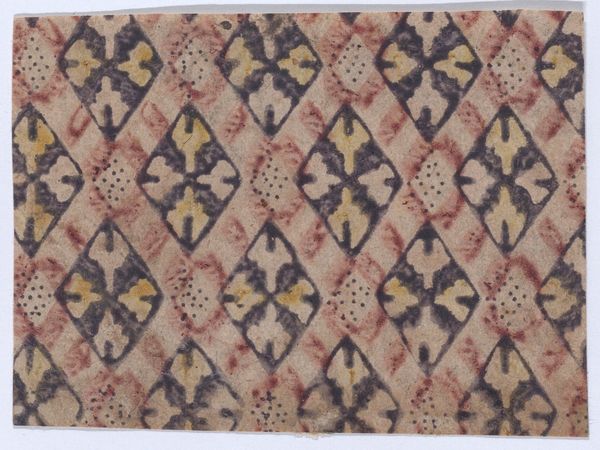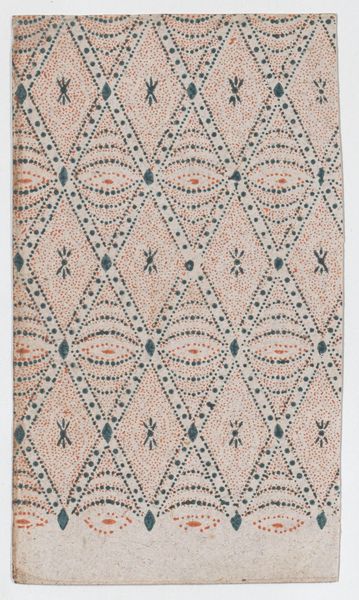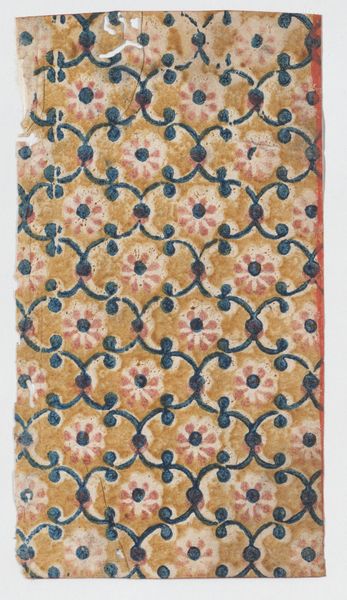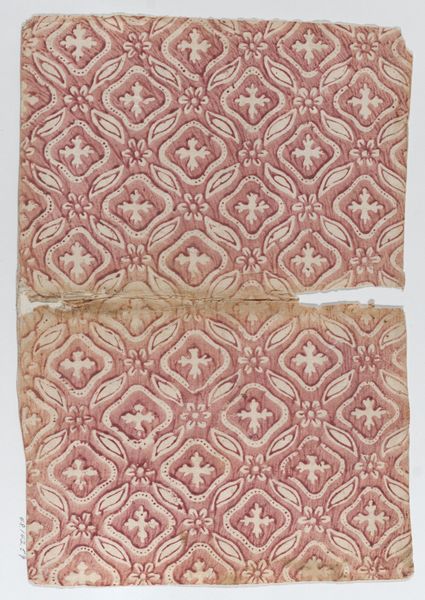
Sheet with overall pattern of triangles and rosettes 1800 - 1900
0:00
0:00
drawing, print, textile
#
drawing
# print
#
textile
#
geometric pattern
#
organic pattern
#
geometric
#
geometric-abstraction
#
textile design
#
decorative-art
Dimensions: Sheet: 5 7/8 × 8 5/16 in. (15 × 21.1 cm)
Copyright: Public Domain
Editor: This textile design, dated between 1800 and 1900 and housed at the Met, features an overall pattern of triangles and rosettes. The repetitive nature of it is what catches my eye; it seems very precisely constructed, like a mathematical equation put onto fabric. How should we approach analyzing this anonymously created piece? Curator: The fact that this is an anonymous work produced during a time when textile production was becoming increasingly industrialized is key. Consider the labor involved in creating this intricate pattern, whether by hand-blocking or an early mechanized process. Editor: So, the means of production is the core? What sort of implications are we discussing? Curator: Precisely. Was it made by a single artisan, meticulously carving a block and applying dye, or by workers in a factory setting? The material conditions surrounding its creation are vital to understanding its meaning. How does the repetition affect your understanding of this? Does it indicate mass production? Editor: I think repetition alludes to both – a potential for hand-crafted design that’s meticulously and repeatedly deployed, or one which lends itself to more automated methods and wide scale distribution... I guess I’m pondering on consumption. If we focus on materials – dyes, fabrics used, does that tell us who could afford it? Curator: Exactly! The quality of the materials tells a story. Natural dyes? Expensive imported cotton? Or locally sourced, cheaper alternatives? These are clues about who the intended consumer was. Furthermore, think about its potential function. Was it for clothing, a household furnishing? Editor: I suppose its use also implicates other areas of manual labor – like its incorporation into clothing made by seamstresses! Looking at this piece with all the social labour attached does indeed broaden my understanding and enjoyment of the textile. Curator: And that’s exactly the point. By analyzing its production and consumption, we can gain insights into the social and economic landscape of its time. It makes us mindful of what the item went through.
Comments
No comments
Be the first to comment and join the conversation on the ultimate creative platform.
